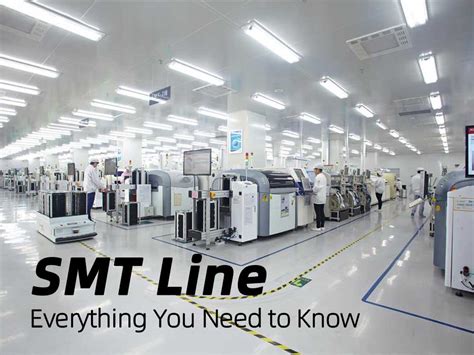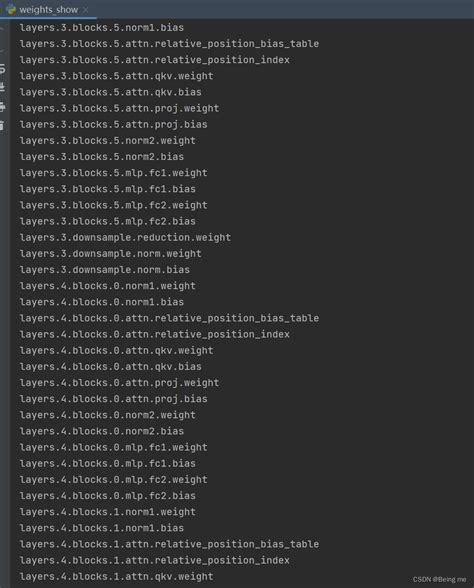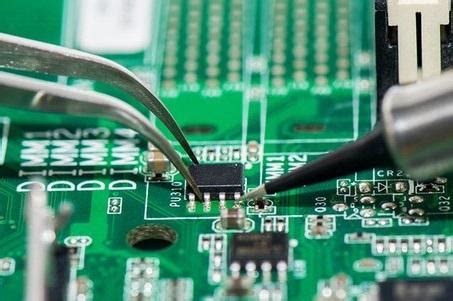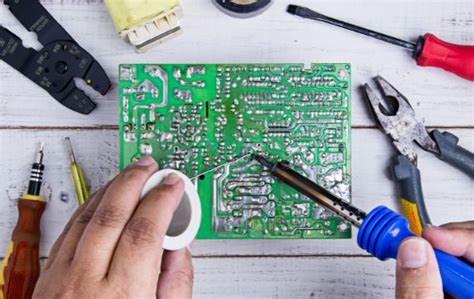Revolutionizing Electronics: The Future of PCB Manufacturing
Key Takeaways
In the pcb manufacturing landscape, staying informed about emerging trends and technologies is crucial for success. As you navigate this field, consider the significance of pcb manufacturing companies pivoting towards advanced techniques that enhance operational efficiency. Automation is not merely a trend; it represents a paradigm shift in streamlining processes and minimizing labor-intensive tasks, ultimately addressing concerns about pcb manufacturing cost. It’s important to recognize that sustainable practices are becoming a cornerstone of modern electronics production. By adopting environmentally friendly materials and processes, your pcb manufacturing business can not only reduce its ecological footprint but also appeal to an increasingly conscious consumer base. Innovations in material science are continuously shaping the future of PCB design and functionality, allowing for lighter, more efficient products. Furthermore, maintaining high-quality standards is vital in this competitive market; employing rigorous quality assurance techniques can significantly bolster your reputation. Lastly, the integration of AI and machine learning holds immense potential for optimizing various aspects of manufacturing workflows—this isn’t just a passing trend but rather an essential strategy for overcoming future challenges while capitalizing on new opportunities within the PCB industry. Embracing these advancements will be crucial in ensuring your place within this dynamic sector.
Emerging Technologies in PCB Manufacturing
In today’s rapidly evolving landscape, pcb manufacturing is undergoing a transformation driven by the emergence of new technologies. You will notice that many pcb manufacturing companies are embracing advancements such as additive manufacturing and advanced automation to streamline production processes. These innovations not only reduce the pcb manufacturing cost but also enhance precision and speed in creating intricate designs. For instance, 3D printing offers the capability to create complex geometries that were once deemed impossible, thus expanding your design possibilities and significantly impacting your pcb manufacturing business in a competitive market.
Furthermore, integrating smart technologies and IoT into production lines enables real-time data monitoring, making it easier to identify and rectify issues before they escalate into larger problems. This leads to increased efficiency and higher product quality, resulting in stronger customer satisfaction and loyalty. As you explore these emerging technologies, keep in mind that optimizing your processes with automation can lead to significant time savings while maintaining the quality standards essential for modern electronics.
“Embracing innovative solutions today prepares your pcb manufacturing business for tomorrow’s challenges.”
Ultimately, staying abreast of these advancements will not only enhance your position within the industry but also contribute to a more sustainable future for electronic products. So, consider how integrating these emerging technologies can take your operations to new heights while meeting market demands effectively.
Enhancing Efficiency through Automation
In the fast-evolving world of pcb manufacturing, automation has become a critical driver of efficiency. By integrating advanced technologies, pcb manufacturing companies can significantly accelerate production processes while maintaining high standards of quality. Automation not only reduces manual errors but also optimizes workflow, leading to decreased pcb manufacturing costs. For instance, implementing automated systems for assembly and soldering can enhance precision and speed. These systems allow for real-time monitoring and adjustments, ensuring that each stage of the production is executed flawlessly.
Below is a comparison table highlighting traditional vs. automated processes in pcb manufacturing:
| Aspect | Traditional Manufacturing | Automated Manufacturing |
|---|---|---|
| Labor Intensity | High | Low |
| Production Speed | Moderate | High |
| Error Rate | Higher | Lower |
| Flexibility in Design | Limited | High |
| Cost Efficiency | Lower in short-term | Higher long-term |
The shift towards automation not only improves your operational capabilities but also allows your pcb manufacturing business to be more competitive in the market. As you embrace these technologies, you’ll find that the ability to scale production efficiently can create new opportunities for growth and development within the industry. With continually improving automation technologies, investing in these systems can drastically enhance your productivity and set a strong foundation for future innovations in electronics production.
Sustainable Practices in Electronics Production
In the realm of pcb manufacturing, sustainability is not just a trend; it is becoming a critical component of your production strategy. By incorporating sustainable practices, you can significantly reduce the pcb manufacturing cost while enhancing your company’s reputation. Modern pcb manufacturing companies are increasingly leveraging eco-friendly materials and processes that minimize waste and energy consumption. For instance, using lead-free solder and recyclable substrates can lead to a notable decrease in your ecological footprint. Additionally, adopting energy-efficient machinery in your pcb manufacturing business not only cuts down on resource use but also increases operational efficiency. You should also consider implementing a closed-loop process, where production waste is recycled back into the system, thereby reducing raw material costs and promoting a circular economy. Ultimately, these sustainable practices not only align with global regulatory standards but also resonate well with eco-conscious consumers, making them a crucial element of your long-term strategy in the competitive landscape of electronics production.
Innovations in PCB Materials and Design
In the realm of pcb manufacturing, material selection and design are pivotal in driving innovation. As you explore the dynamic landscape, you’ll find that pcb manufacturing companies are increasingly adopting advanced materials, such as high-frequency laminates and flexible substrates, which allow for more complex and compact designs. This shift enhances not just performance but also the adaptability of pcb manufacturing business models to meet the growing demand for miniaturization in electronic devices. Additionally, the integration of advanced design software streamlines workflows, reducing overall pcb manufacturing cost while improving precision and reducing errors. The emergence of multilayer boards with innovative materials also facilitates better thermal management and signal integrity, ensuring that products meet today’s high-performance standards. By prioritizing these innovations in materials and design, your commitment to efficiency and quality will be clearly defined in a competitive market.
Quality Assurance Techniques for Next-Gen PCBs
In the realm of pcb manufacturing, ensuring unparalleled quality is paramount, especially as the demand for more complex and compact circuits grows. To meet these challenges, you can explore a variety of quality assurance techniques that are emerging within the industry. One such method is the implementation of advanced inspection technologies, including Automated Optical Inspection (AOI) and X-ray imaging. These techniques help you identify defects early in the production process, significantly reducing costs associated with errors and rework—an essential factor in controlling pcb manufacturing cost.
Moreover, collaborating with reputable pcb manufacturing companies can enhance your quality assurance protocols. These organizations often utilize rigorous testing methods such as Electrical Testing (ET) and Flying Probe Testing, which validate circuit functionality before they reach the end user. This commitment to rigorous testing not only boosts product reliability but also strengthens your pcb manufacturing business against potential failures in real-world applications.
Another critical aspect is adopting a continuous improvement mindset through Quality Management Systems (QMS). By integrating frameworks such as ISO 9001, you can enhance your operational efficiency while ensuring that every stage of production meets stringent quality standards. Ultimately, by leveraging these quality assurance techniques, you position your business to not only meet current consumer demands but also adapt to future innovations in the ever-evolving landscape of electronics production.
The Role of AI and Machine Learning in Manufacturing Processes
In the rapidly evolving landscape of pcb manufacturing, the integration of AI and machine learning is proving transformative. These technologies empower pcb manufacturing companies to enhance their operational efficiency and product quality. By analyzing vast amounts of data, AI systems can anticipate defects or inefficiencies in the production line, helping to reduce pcb manufacturing costs significantly. For instance, predictive maintenance algorithms can identify potential equipment failures before they occur, minimizing downtime and optimizing the entire pcb manufacturing business process. Furthermore, machine learning algorithms facilitate smarter design choices by predicting the performance of various materials and configurations, paving the way for innovative PCB solutions that meet today’s rigorous demands. As you explore advancements in this field, consider how these technologies are not merely trends but fundamental shifts that will redefine production standards and practices in the electronics sector. The future of PCB manufacturing holds immense potential, driven by these intelligent systems—the key to unlocking an era of unprecedented efficiency and sustainability.
Future Challenges and Opportunities in the PCB Industry
As the landscape of pcb manufacturing evolves, you may find yourself navigating a myriad of challenges and opportunities that come with it. One pressing challenge is the increased demand for faster production cycles paired with high-quality outputs. PCB manufacturing companies are grappling with the need to balance manufacturing costs while striving to maintain standards of excellence. Additionally, as technologies continue to advance, staying updated on the latest developments is crucial. Embracing automation can streamline processes, but it also requires an investment in training and technology that can initially elevate pcb manufacturing costs. However, this challenge comes with considerable opportunities; for instance, integrating sustainable practices not only appeals to environmentally conscious consumers but also positions your business as a leader in a market that increasingly values sustainability. Moreover, as you explore innovations in design and materials, you open doors to creating more efficient and competitive products. Thus, adapting your pcb manufacturing business to embrace these changes could enhance your market position significantly while addressing consumer demands for sustainability and quality. Balancing these dynamics will be essential as you navigate the future of the PCB industry.
Conclusion
In reflecting on the transformative landscape of pcb manufacturing, it becomes evident that the advances in technology and practices are paving the way for a more innovative future. As you navigate the realm of pcb manufacturing companies, it’s crucial to understand how these innovations impact both the efficiency and cost-effectiveness of the pcb manufacturing business. With increasing focus on sustainability, many organizations are now adopting greener strategies that not only reduce waste but also lower pcb manufacturing costs. Additionally, advancements in materials and design are leading to higher quality end products, allowing you to meet increasingly stringent market demands. Staying informed about these trends will empower you to make strategic decisions that align with industry changes, ensuring your position in this competitive landscape while contributing to a more sustainable future for electronics production.
FAQs
What is the significance of PCB manufacturing in the electronics industry?
PCB manufacturing is crucial for the electronics industry as it serves as the backbone for most electronic devices. High-quality PCBs ensure optimal performance, reliability, and efficiency in products ranging from smartphones to automotive systems.
How can I assess PCB manufacturing companies for my project?
When evaluating PCB manufacturing companies, consider their experience, technological capabilities, quality assurance processes, and customer reviews. Additionally, look into their pcb manufacturing cost to ensure it aligns with your budget while still meeting quality standards.
What factors influence the cost of PCB manufacturing?
The pcb manufacturing cost can vary based on several factors such as complexity of design, size and material requirements, production volume, and lead time. Custom designs typically incur higher costs compared to standard layouts.
What are emerging trends in PCB manufacturing business?
Emerging trends in the pcb manufacturing business include automation in production processes, adoption of advanced materials that enhance performance and sustainability, and integration of innovative design technologies that allow for miniaturization without sacrificing quality.
How does automation enhance efficiency in PCB manufacturing?
Automation improves efficiency by streamlining repetitive tasks such as soldering and inspection processes. This reduces human error and accelerates production timelines, helping companies meet increasing demands without compromising quality.
For more insights on enhancing your understanding of PCB manufacturing, please click here: AndwinPCB – PCB Manufacturing







